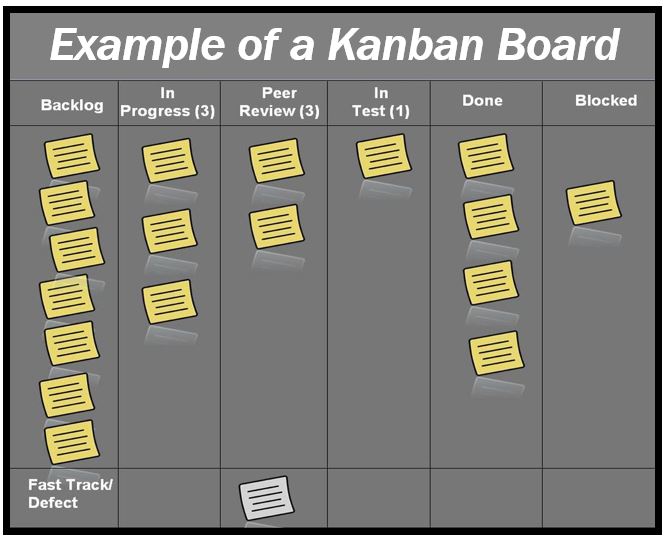Kanban translates to a ‘visual sign’ and is a framework that maximized the supermarket and customer flow, improving inventory management efficiency. Kanban is a framework in project management used to integrate Agile encouraging crucial updates to systems or projects.
The Kanban procedure places its basis on getting work from the backlog and completing it on a need basis. This Just-in-Time methodology uses the Kanban board, which is the core of the process. A basic board can have three columns indicated Done, Doing, and To do tasks. Work members given various jobs move cards across the Kanban board to show the phase a task is in.

The visual cue that is brought by the Kanban board gives a fast view of various tasks assigned. The board can be made from Post-it-notes, physical boards, or digital boards. The digital board allows teams to work on similar projects from various locations, and you can still track progress in real-time. For the physical boards, teams can use actual cards, moving them from left to right.
Kanban is easy for teams to begin with since it is a framework that is simple and does not require numerous procedures or setups. Kanban can also be set together with other existing workflows to aid in the management of projects. Many teams attest to the project management structure since it delivers an increase in productivity, high-quality services, and reduction of waste.
There are however five main principles that Kanban projects incorporate:
-
Visualizing workflow
To manage working with Kanban, it is essential for you to be able to visualize the workflow. When you use a real-time board that is up-to-date, it is easy for you to quickly see the work progress. You can tell what amount is pending, which team seems to be encountering issues, and what is still pending that requires attention. The ease with which you can visualize workflow allows you to tackle problems that arise ahead of time.
-
Limiting WIP (work in progress)
WIP limits (Work in progress limits) determine the quantity of work a team can complete for each workflow and phase on the board. The Kanban should be able to focus on minimizing the work in progress, increasing speed throughout the workforce. The visual board causes motivation of workers and alerts management on teams that need to be boosted.
-
Managing and enhancing the flow
Managing the workflow or movement of tasks can be done by monitoring the Kanban board. The board should be enhanced over time by measuring and tracking performance metrics. You could choose to look at the quantity of items done and items in progress to work out the average rate of completion of tasks. In addition, you could also find the total time it takes for a cycle of given tasks.
-
Making workflows explicit
It is best to ensure that the full team is aware of the procedures and processes of tasks assigned to them. This will increase the efficiency of workflows by making sure that teams are competent. You can always make an effort to frequently review the procedures with the workflow to keep the teams relevant and efficient.
-
Continuously improving
If your team is conversant with the provided Kanban system and the workflow is running smoothly, the team should easily identify problems that may arise. Once they can point out the issue, then they should be able to provide feedback about the system to ensure excellent throughput.

The visual framework of Kanban had great value when deciding whether it is the best project management tool for the team. Kanban has worked for industries that handle physical goods, but today it can be seen being applied in sectors that handle intangible goods. Depending on the workflow, having knowledge of being a Kanban Coach is the best so that you can apply the management method to integrate with existing processes.

